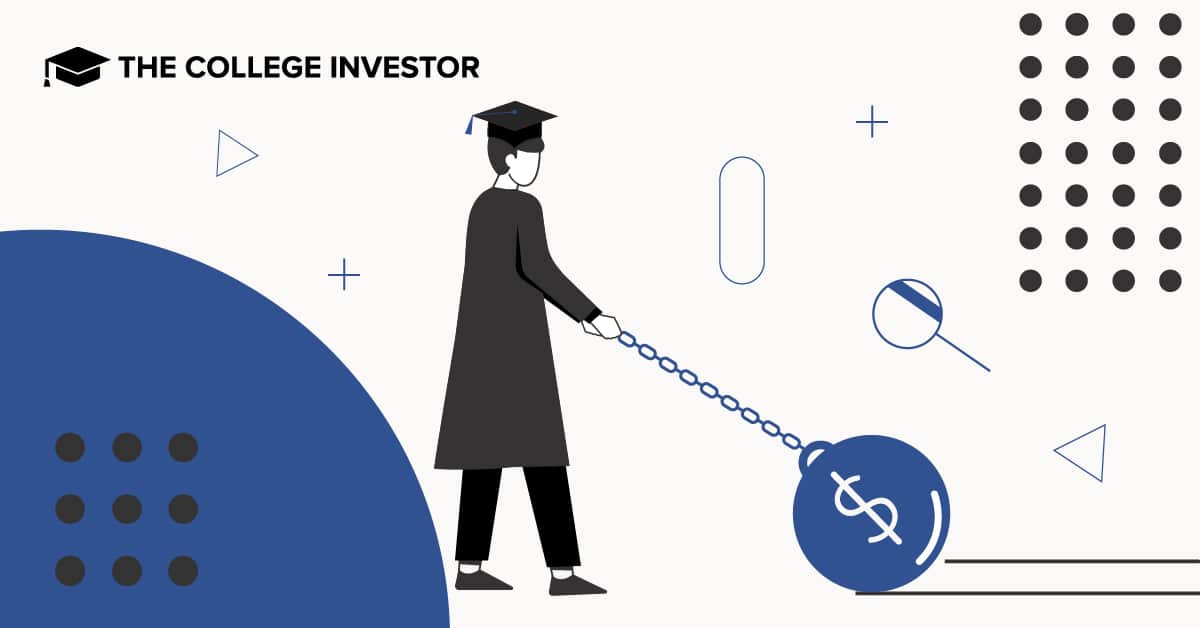
Source: The College Investor
You may be wondering, what is forbearance steering? How does it affect borrowers? What are the alternatives to forbearance? What are your options if you were affected by forbearance steering?
If you’ve watched the news lately, you’ll know that the Department of Education recently took action against forbearance steering, and created a new Income-Driven Repayment Plan waiver (IDR Waiver) to address the issue. This opportunity is estimated to help upwards of 725,000 people qualify for student loan forgiveness in the first year.
What Is Forbearance Steering?
Forbearance steering happens when a borrower is placed in a general forbearance, even when the borrower would be better off in an income-driven repayment plan.
The Consumer Finance Protection Bureau (CFPB) filed a lawsuit against Navient in 2017, alleging that Navient “steered borrowers experiencing long-term distress or hardship into forbearance” instead of income-driven repayment plans.
The CFPB argued that Navient compensated call center staff based on their average call time, thereby discouraging call center staff from engaging in long and detailed conversations with borrowers about whether an income-driven repayment plan was appropriate. Borrowers can enroll in a forbearance over the phone, with written confirmation sent to the borrower afterward, while income-driven repayment requires the borrower to complete a long application form.
Navient enrolled more borrowers in forbearance than income-driven repayment from 2010 to 2015.
Navient responded to the CFPB’s allegations, arguing that it does offer income-driven repayment when appropriate and that some borrowers nevertheless choose forbearance. Navient pulled recordings of conversations the CFPB’s witnesses had with call center staff. This showed the call center staff had encouraged the borrowers to choose income-driven repayment, but the borrowers insisted on choosing forbearance. Navient also noted that a short forbearance is sometimes required as a prelude to changing the borrower’s repayment plan to an income-driven repayment plan.
Although it is easier to sign up a borrower for a forbearance than an income-driven repayment plan, loan servicers earn less money when a borrower is in forbearance. The U.S. Department of Education pays loan servicers $1.05 per month for borrowers in a forbearance and $2.85 per month for borrowers in an income-driven repayment plan. Loan servicers are paid nearly two-thirds less for borrowers in forbearance than for borrowers in income-driven repayment, thereby aligning the financial incentives for loan servicers with getting borrowers into income-driven repayment plans.
Navient settled with the CFPB and 39 state attorneys general in January 2022, resolving the forbearance steering allegations and other allegations of unfair and deceptive practices and abuses.
The settlement implicitly defined forbearance steering as follows:
How Does Forbearance Steering Affect Borrowers?
Both forbearances and income-driven repayment provide borrowers with some financial relief. Both are better than delinquency and default. But, there are several important differences.
A forbearance suspends the borrower’s obligation to make payments on their loans, usually up to a maximum of three years for federal loans and one year for private student loans.
Interest continues to accrue when a loan is in a forbearance and is added to the loan balance at the end of the forbearance period. This increases the amount owed by the borrower, making it more difficult for them to repay the loan after the forbearance than before.
Deferments are similar to forbearances, but the federal government pays the interest on subsidized loans during a deferment. The federal government does not pay the interest on unsubsidized loans during a deferment. The accrued but unpaid interest is added to the loan balance at the end of the deferment period. The economic hardship deferment counts toward forgiveness at the end of an income-driven repayment plan.
What Is Forbearance Steering?
Forbearances are in contrast with income-driven repayment plans, where borrowers receive several important benefits.
Forbearances are better for short-term financial difficulty, such as medical or maternity/paternity leave and short-term unemployment, while income-driven repayment is better for long-term financial difficulty.
Forbearance may not be your best option. If you're not sure you qualify for an income-driven repayment (IDR) plan, let Chipper help you explore your options. Simply connect your loans and Chipper will make sure you’re on the best repayment program and qualify you for any loan forgiveness programs you might be eligible for. Sign up here >>
Options for Borrowers Affected by Forbearance Steering (IDR Waiver)
The Navient settlement is automatic. Postcards were sent to eligible borrowers on April 22, 2022 to select a payment option for the forbearance steering settlement payment.
The U.S. Department of Education announced on April 19, 2022 that it is taking steps to end forbearance steering and to address past forbearance steering.
The U.S. Department of Education will adjust the qualifying payment count for forgiveness under income-driven repayment and PSLF to compensate for forbearance steering. The qualifying payment count will be increased by the number of months in forbearance for borrowers affected by forbearance steering, even though forbearances do not normally count toward forgiveness.
For the purpose of this adjustment, the U.S. Department of Education defines forbearance steering as follows:
- Forbearances of more than 12 consecutive months
- Cumulative forbearances of more than 36 months
Borrowers who were in a shorter-term forbearance but who feel that they were affected by forbearance steering can request an account review by filing a complaint with the FSA Ombudsman.
More than 3 million borrowers will benefit from these adjustments.
You don't have to tackle this on your own. Chipper can help you get on track in minutes. If you are still carrying a student loan balance, you can use Chipper's Round-Ups tool to pay it off faster. Check out Chipper here and get started >>

Mark Kantrowitz is an expert on student financial aid, scholarships, 529 plans, and student loans. He has been quoted in more than 10,000 newspaper and magazine articles about college admissions and financial aid. Mark has written for the New York Times, Wall Street Journal, Washington Post, Reuters, USA Today, MarketWatch, Money Magazine, Forbes, Newsweek, and Time. You can find his work on Student Aid Policy here.
Mark is the author of five bestselling books about scholarships and financial aid and holds seven patents. Mark serves on the editorial board of the Journal of Student Financial Aid, the editorial advisory board of Bottom Line/Personal, and is a member of the board of trustees of the Center for Excellence in Education. He previously served as a member of the board of directors of the National Scholarship Providers Association. Mark has two Bachelor’s degrees in mathematics and philosophy from the Massachusetts Institute of Technology (MIT) and a Master’s degree in computer science from Carnegie Mellon University (CMU).
Editor: Robert Farrington Reviewed by: Chris Muller